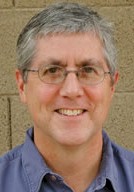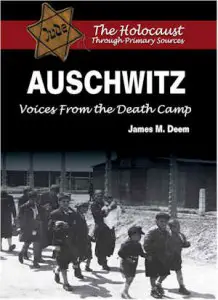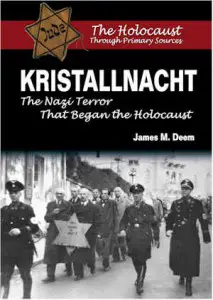 James M. Deem is an American writer of over 20 fiction and nonfiction books. He was born in 1950 in Wheeling, West Virginia. In this interview, James talks about his books, his love for history, reading and writing.
James M. Deem is an American writer of over 20 fiction and nonfiction books. He was born in 1950 in Wheeling, West Virginia. In this interview, James talks about his books, his love for history, reading and writing.
Voicu Mihnea Simandan: You have been a story writer for most of your life. How has your writing evolved over time?
James M. Deem: As a child, my early stories were very fanciful, often about creatures from outer space and ghosts. As I grew up, I took two paths with my writing. On one hand, I wrote novels that still used my imagination to create the story. On the other hand, I wrote nonfiction (sometimes fanciful nonfiction, though it was based on my research) about all kinds of topics that came from my childhood. Over time, I concentrated more on nonfiction and have spent more time on scientific and historic books for children.
VMS: Where did the ideas for The Very Real Ghost Book of Christina Rose (1998) come from?
JMD: This book is one of my favorites. My first nonfiction book was entitled, How to Find a Ghost (Houghton Mifflin, 1998). Many children wrote me and asked me to write another book about ghosts. I couldn’t write another nonfiction book, but it had occurred to me to write a novel integrating much of what I had learned from reading true ghost stories. During my research on ghosts I had come across an old book entitled Lord Halifax’s Ghost Book, which had always impressed me. So I thought what could be better than a haunted girl (with a twin brother) writing her own ghost book with lots of ghost stories embedded.
VMS: You have started as a children / YAL author but have moved on to write well-received non-fiction books. How did you find the transition?
JMD: I really did both. My first two books (one YA and one nonfiction) were published simultaneously by different publishers. I enjoy having the ability to write both fiction and nonfiction—though I find fiction to be much more time-consuming (that’s why I haven’t written so many novels).
VMS: Do you employ similar skills when writing books targeted for an older readership?
JMD: Yes. I don’t change my writing style, and I do not alter my vocabulary. I just tell the story the best way I know how. I do not like to sound very academic; I like to tell a good, fascinating story.
 VMS: In your most recent books (published in fall 2011), Auschwitz: Voices from the Death Camp and Kristallnacht: The Nazi Terror that Began the Holocaust you deal with a very difficult topic. Why have you chosen, now, to write about the Holocaust?
VMS: In your most recent books (published in fall 2011), Auschwitz: Voices from the Death Camp and Kristallnacht: The Nazi Terror that Began the Holocaust you deal with a very difficult topic. Why have you chosen, now, to write about the Holocaust?
JMD: I was asked if I would be interested in writing one of these two books. The other titles in the series had been selected by other authors. I knew that these two subjects would be very difficult, and I like a challenge as a researcher and writer. I knew Kristallnacht wouldn’t have a wealth of information available, and I knew the topic of Auschwitz would be hard to capture well in a book with a set number of pages. I liked the challenge and accepted both. I have always been interested in the Holocaust but had never considered writing about it. I think it’s important to write about such topics, without fear. I have also been going to schools recently to talk to students about these subjects. I have found that very rewarding to share the wealth of my research.
VMS: How much time do you spend with research for your non-fiction books?
JMD: This can take two or three years, though I am not working every day (or even once a week) on researching a book. I need time for the information to consolidate in my mind. My latest book (to be published in fall 2012 by Houghton Mifflin, Faces from the Past) took two years and much travel. In fact, I traveled over 60,000 miles by plane and by car to complete what needed to be done for the research. It will be my longest work of nonfiction.
VMS: Everyone seems to believe that children no longer read and, with the availability of affordable e-readers, many believe that, sooner or later, children will no longer want to hold books in their hands. Please comment.
JMD: There are many distractions that get in the way of reading, but I believe in my heart that parents and teachers who take the time to read to children (at first) will see children want to read stories themselves as they grow older. It is important, however, to keep those distractions (especially electronic ones) at bay.
VMS: You are very active online and maintain an excellent website. How important is it for writers these days to be “out there” on the Internet, interacting with their fans?
JMD: I think this depends on the writer. I enjoy maintaining my website because it allows me to keep in touch with fans and with people who know nothing about my work or my interests. I also know authors who do not keep a website and are quite successful as authors. Some author websites are strictly for publicity. I try to give readers lots of material to read and learn from on my website because I think that is important. After all, I was a professor for almost 30 years, and I want to encourage children to read, write, think, and learn forever.
 VMS: You’ve recently been on a few school visits. What were some of the highlights of these visits?
VMS: You’ve recently been on a few school visits. What were some of the highlights of these visits?
JMD: School visits are a joy. I recently completed two tours of international schools in Europe (Denmark, France, Switzerland, and Portugal). I had the best time talking to students about my books and my research, and they asked the most outstanding questions. It was beneficial for me to get out of my usual environment, and I think it was good for the students to hear a voice from another country.
VMS: Do you still read children’s books and young adult fiction?
JMD: I read children’s books to my own four children, but stopped when they grew older. Now, I choose not to read young adult fiction because I do not want it to influence me in any way (especially subconsciously). I want to keep my own ideas fresh as possible.
VMS: What book are you working on right now?
JMD: I mentioned above that I have just completed Faces from the Past: Forgotten People of North America. This book is a look at the facial reconstruction of historic remains from North America, beginning with a man who died some 10,000 years ago and was buried in a Nevada cave and going to about 1881 with the remains of six miners from China who died in Wyoming. The book discusses the art and science of facial reconstruction; but it also addresses the history behind each discovery and the archaeology involved in the analysis of the remains. As such, the book synthesizes history, archaeology, science, and art; I’m very proud of what I was able to accomplish in this book.
VMS: What is your writing routine?
JMD: I usually write in the morning until lunch time, then I usually do other things in the afternoon. I can’t write for eight hours—it’s just too much intensity.
VMS: What advice would you give to aspiring writers?
JMD: Write what you like to write (no matter what anyone else says), and be persistent. My novel, 3 NBs of Julian Drew, took 27 years to write. I had no idea it would take so long, but it was a book that was very important to me and I persisted in writing it until I sensed that it was completed. 27 years may seem like a long time, but I enjoyed the time I spent on that book. I hope aspiring writers would follow this example and never give up.
VMS: Thank you for your time.
Voicu Mihnea Simandan
Bangkok, Thailand
October 29, 2011

